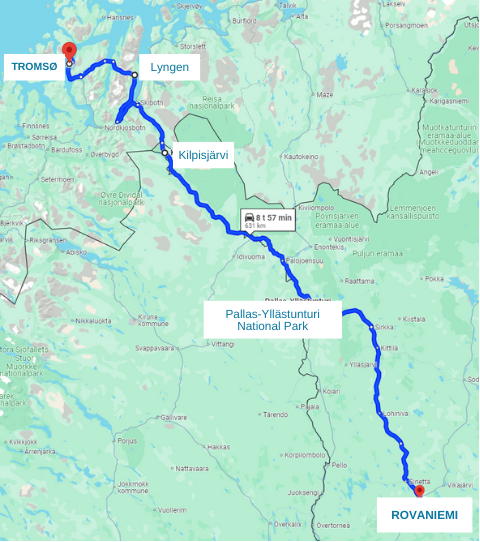Rovaniemi
The Heart of the Arctic Wonderland
A bit of history
Rovaniemi, located just south of the Arctic Circle, has a history deeply rooted in its geographical and cultural context. The region was originally inhabited by the Sámi people, who were traditionally semi-nomadic, relying on reindeer herding, fishing, and hunting. The first recorded mention of Rovaniemi dates back to the 15th century, but it remained a remote, sparsely populated area for centuries.
In the 19th century, the town began to develop due to the logging industry, taking advantage of the rich forests of Lapland. This period marked the beginning of Rovaniemi’s transformation from a small settlement into a more established community.
During World War II, Rovaniemi suffered severe destruction when retreating German forces burned almost the entire town in 1944. In the aftermath, the town was rebuilt, with the new layout designed by the renowned Finnish architect Alvar Aalto. His design gave Rovaniemi its distinctive shape, resembling reindeer antlers.
Rovaniemi’s modern identity was further shaped in 1950 when Eleanor Roosevelt visited the town, leading to the creation of Santa Claus Village. This connection to Santa Claus has since made Rovaniemi a major international tourist destination, especially during the winter months.
Today, Rovaniemi is not only a center for tourism but also a hub for Arctic research, culture, and education, home to institutions like the University of Lapland and the Arktikum Science Museum. The town balances its rich cultural heritage with its role as a modern, vibrant city in the Arctic region.
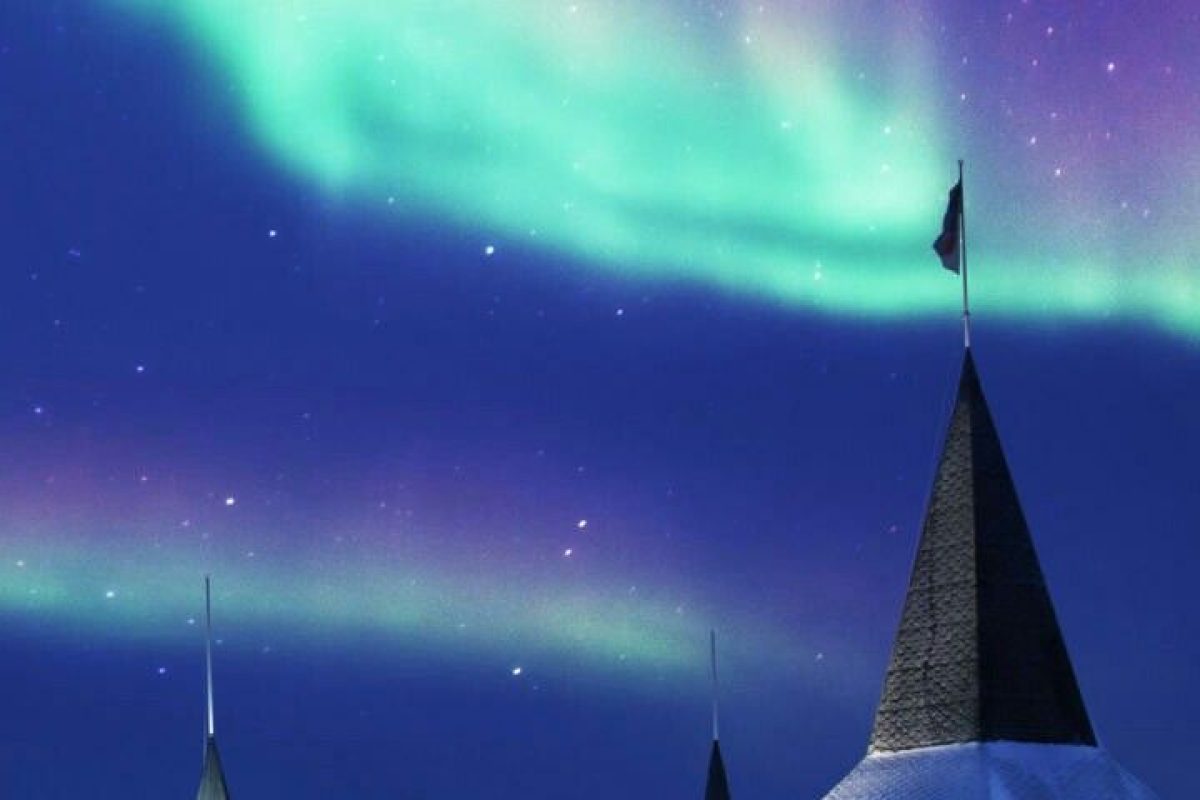
Fun Facts
- Home of Santa Claus: Rovaniemi is known as the “official” hometown of Santa Claus. You can visit Santa Claus Village on the Arctic Circle, where it’s Christmas all year round.
- Arctic Circle Line: The Arctic Circle runs through Rovaniemi, and you can cross it at Santa Claus Village. There’s even a line marking the exact spot!
- Midnight Sun and Polar Night: In summer, Rovaniemi experiences the Midnight Sun, with 24 hours of daylight for about two months. In winter, the Polar Night brings weeks of near darkness, perfect for Northern Lights viewing.
- Reindeer Population: There are more reindeer than people in Lapland, and you’re likely to see them wandering around Rovaniemi.
- Arctic Design: The city’s layout, designed by famed architect Alvar Aalto, is shaped like a reindeer’s head, reflecting the local culture and nature.
- Northern Lights: Rovaniemi is one of the best places in the world to see the Northern Lights, visible on clear nights from late August to early April.
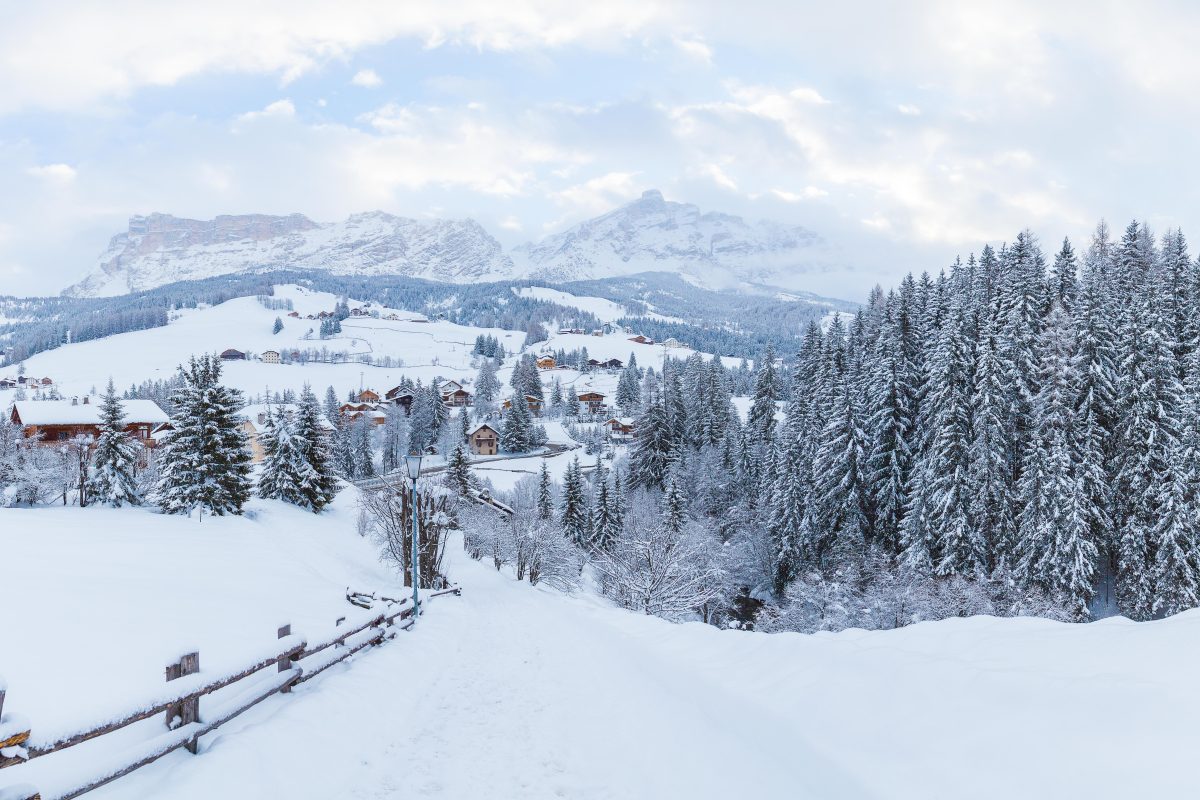
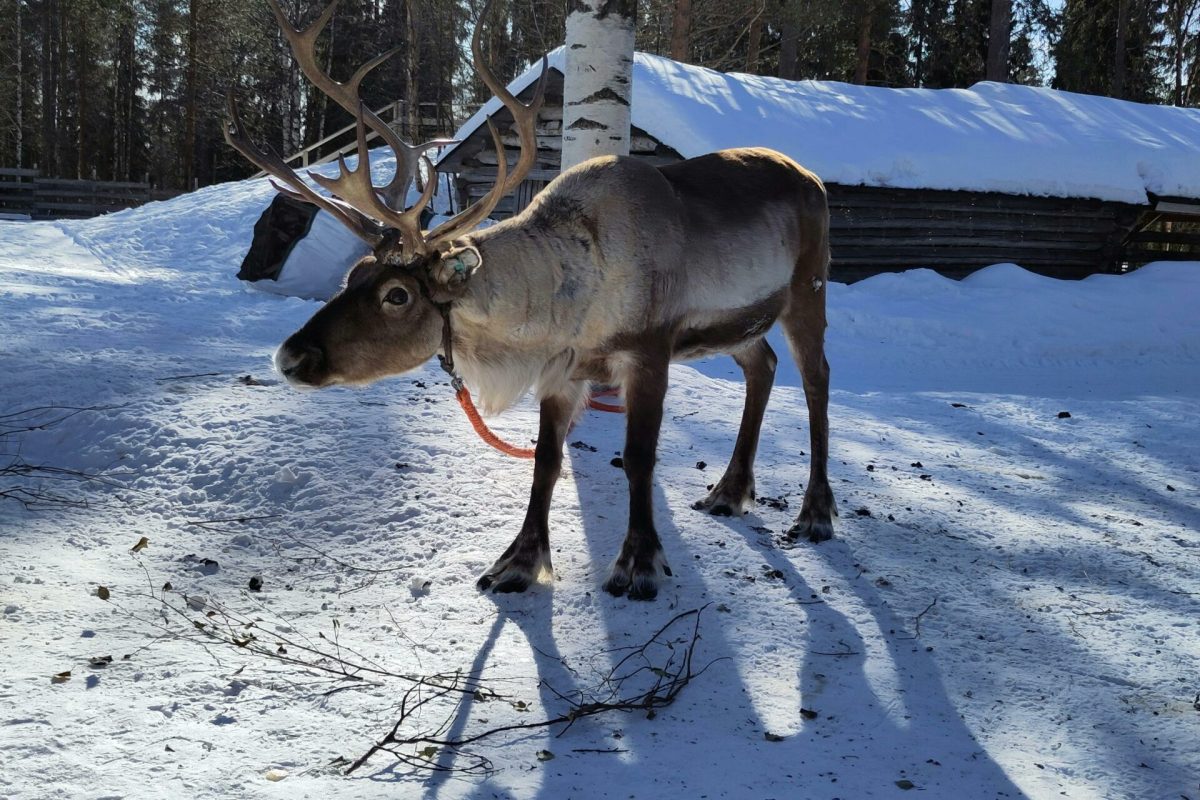
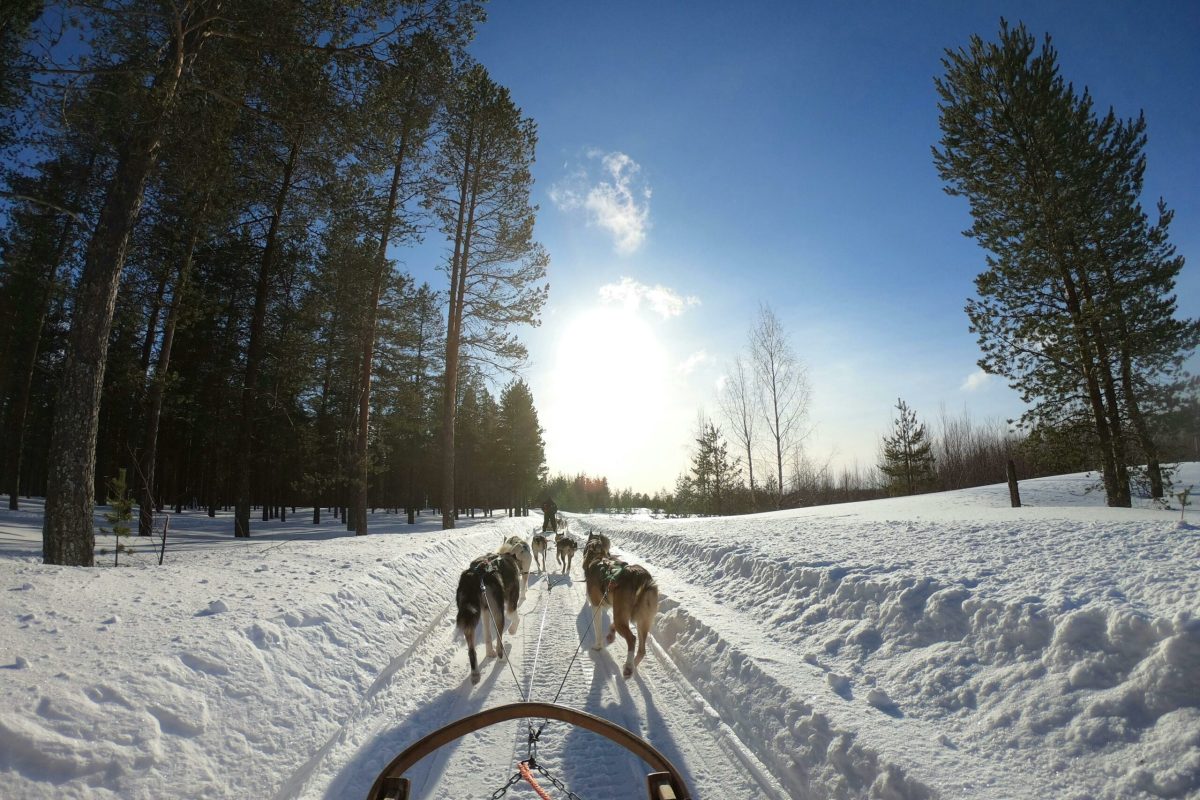
What not to miss in Rovaniemi
1. Ersfjorden and Tungeneset
- Ersfjorden is one of Senja’s most picturesque fjords, surrounded by towering mountains. Nearby, Tungeneset offers a spectacular viewpoint with wooden walkways leading to a stunning view of the jagged “Devil’s Teeth” (Okshornan) peaks jutting out over the sea.
2. Husøy
- A small, charming fishing village on an island connected by a bridge. Husøy offers a glimpse into traditional coastal Norwegian life and is surrounded by dramatic scenery.
3. Bergsbotn
- The Bergsbotn viewing platform is a must-visit. It offers a panoramic view of the Bergsfjord and the surrounding mountains, making it an ideal spot for photography.
4. Segla Mountain
- Segla is perhaps the most iconic mountain on Senja, with its steep, dramatic cliffs plunging into the sea. The hike to the summit is challenging but rewarding, with incredible views.
5. Ånderdalen National Park
- This national park offers hiking trails through diverse landscapes, including forests, mountains, and wetlands. It’s a great place for nature lovers and those interested in wildlife.
6. Senjatrollet
- This quirky attraction is home to Norway’s largest troll statue and a theme park with troll-related activities. It’s a fun stop, especially for families.
7. Mefjordvær and Bøvær
- These two scenic coastal villages offer beautiful beaches, fishing opportunities, and stunning views of the surrounding mountains and ocean.
8. Hamn i Senja
- A historic fishing village turned into a resort, Hamn i Senja is a great place to stay, with activities like kayaking, fishing, and whale watching. The nearby Anderdalen National Park is also easily accessible from here.
9. Gryllefjord
- A picturesque fjord and village, Gryllefjord is also where the ferry to Andøya departs, offering a unique way to explore more of northern Norway.
10. Northern Lights and Midnight Sun
- Depending on the season, Senja is an excellent place to witness the Northern Lights (Aurora Borealis) in winter or experience the Midnight Sun during summer, when the sun never sets.
Traveling Tromsø to Rovaniemi
Traveling from Tromsø, Norway, to Rovaniemi, Finland, takes you through a diverse range of Arctic landscapes and interesting sites. Here are some highlights you might enjoy along the way:
- Tromsø: Start your journey in Tromsø, known for its stunning Arctic surroundings. Explore attractions like the Arctic Cathedral, Polaria Museum, and take a cable car ride up Mount Storsteinen for panoramic views.
- Lyngen Alps: Continue through the Lyngen Alps, which offer striking scenery with their sharp peaks and deep fjords. This region is perfect for outdoor activities like hiking and skiing.
- Kilpisjärvi: Stop by Kilpisjärvi, known for its beautiful lake and the Three-Country Cairn (Treriksröset) where Finland, Sweden, and Norway meet. It’s also a great spot for hiking, particularly up the Saana Fell.
- Pallas-Yllästunturi National Park: On your route to Rovaniemi, consider a detour to this national park in Finland. It features striking fell landscapes, excellent hiking trails, and opportunities to enjoy the Arctic wilderness.
- Rovaniemi: Upon reaching Rovaniemi, visit the Santa Claus Village to meet Santa Claus, cross the Arctic Circle, and explore the various attractions. Also, consider visiting the Arktikum Museum to learn more about Arctic life and science.
This journey provides a rich experience of the Arctic, from dramatic landscapes and unique natural phenomena to charming cultural attractions.
